I want to feed an audio signal generated by a Cortex M into a legacy IC that accepts 0.9 V max, and draws 1.8 mA max.
Clever people told me that a voltage divider would drain too much voltage out of the Cortex M, and that I should use an opamp with gain 1/4 instead.
Of course I have no experience with opamps at all. Looking at the selection at Digikey, I don't even know what to filter for, since "gain" seems to be a mostly irrelevant term for most opamps there.
Assuming it is as simple as I imagine, can you point out what terms or values I need to look for?
And if it's more complicated than that, can you describe what kind of opamp and circuit I need for this?
